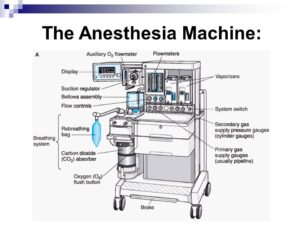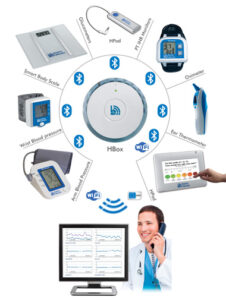The anesthesia monitoring devices market is expected to grow significantly in the coming years, driven by the increasing demand for safe and effective anesthesia administration during surgeries. Anesthesia monitoring devices are used to monitor a patient’s vital signs such as heart rate, blood pressure, oxygen saturation, and temperature during anesthesia administration. These devices play a crucial role in ensuring patient safety and preventing anesthesia-related complications such as respiratory depression, hypotension, and hypoxemia. With the growing number of surgeries and the increasing focus on patient safety, the demand for anesthesia monitoring devices is expected to increase in the healthcare industry.
According To Fact.MR,The global anesthesia monitoring devices market stands at US$ 2.2 Billion and is projected to climb to US$ 5.2 Billion by the end of 2032. Over the next five years, worldwide shipments of anesthesia monitoring devices are anticipated to increase at an impressive CAGR of 9.1%.
Download Sample Copy of This Report: https://www.factmr.com/connectus/sample?flag=S&rep_id=7683

On the basis of product type, the anesthesia monitoring devices market can be segmented into standalone devices and integrated devices. The standalone devices segment is expected to dominate the market, driven by the increasing adoption of these devices in ambulatory surgical centers and outpatient clinics. Moreover, the demand for portable and lightweight standalone devices is also increasing, as they offer flexibility and ease of use in a variety of clinical settings. Additionally, the integrated devices segment is also expected to grow, driven by the increasing trend of incorporating anesthesia monitoring capabilities into multiparameter patient monitors. Overall, the anesthesia monitoring devices market is expected to witness significant growth in the coming years, driven by the increasing demand for safe and effective anesthesia administration during surgeries.
What Market Trends Are Influencing Anesthesia Monitoring Devices Market Sales?
Several market trends are influencing anesthesia monitoring devices market sales. Firstly, the growing number of surgeries being performed globally is a major driver of the anesthesia monitoring devices market. With an increasing number of surgeries, the demand for anesthesia administration and monitoring devices is also increasing. Moreover, advancements in healthcare infrastructure and the availability of skilled healthcare professionals are also contributing to the growth of the anesthesia monitoring devices market. Furthermore, increasing investment in research and development activities by key players in the market is driving innovation and the development of advanced anesthesia monitoring devices with improved safety and accuracy.

Secondly, the increasing adoption of portable and lightweight anesthesia monitoring devices is also driving market growth. Portable anesthesia monitoring devices offer several benefits, such as flexibility, ease of use, and cost-effectiveness, making them ideal for use in ambulatory surgical centers and outpatient clinics. Moreover, the integration of anesthesia monitoring capabilities into multiparameter patient monitors is also gaining traction, as it allows for the monitoring of multiple vital signs during anesthesia administration. Additionally, the rising demand for non-invasive monitoring devices is also driving market growth, as they offer improved patient comfort and safety. Overall, these market trends are expected to continue to drive sales in the anesthesia monitoring devices market in the coming years.
What are the Factors Hampering the Global Anesthesia Monitoring Devices Market?
Although the global anesthesia monitoring devices market is expected to grow significantly in the coming years, there are several factors that are hampering its growth. Firstly, the high cost of anesthesia monitoring devices is a major factor that is limiting their adoption, particularly in developing countries. The cost of anesthesia monitoring devices is high due to the high cost of raw materials, advanced technologies, and the need for stringent quality control measures. As a result, many healthcare facilities in developing countries may not be able to afford these devices, which could limit their adoption and ultimately impact market growth.
Secondly, the lack of trained healthcare professionals is another factor that is hampering the growth of the anesthesia monitoring devices market. The effective use of anesthesia monitoring devices requires skilled and trained healthcare professionals, such as anesthesiologists and nurse anesthetists. However, there is a shortage of these professionals in many regions, particularly in developing countries. The lack of trained professionals could limit the adoption of anesthesia monitoring devices and ultimately impact market growth. Additionally, the complexity of these devices and the need for proper training and maintenance could also be a barrier to adoption, particularly in smaller healthcare facilities with limited resources.